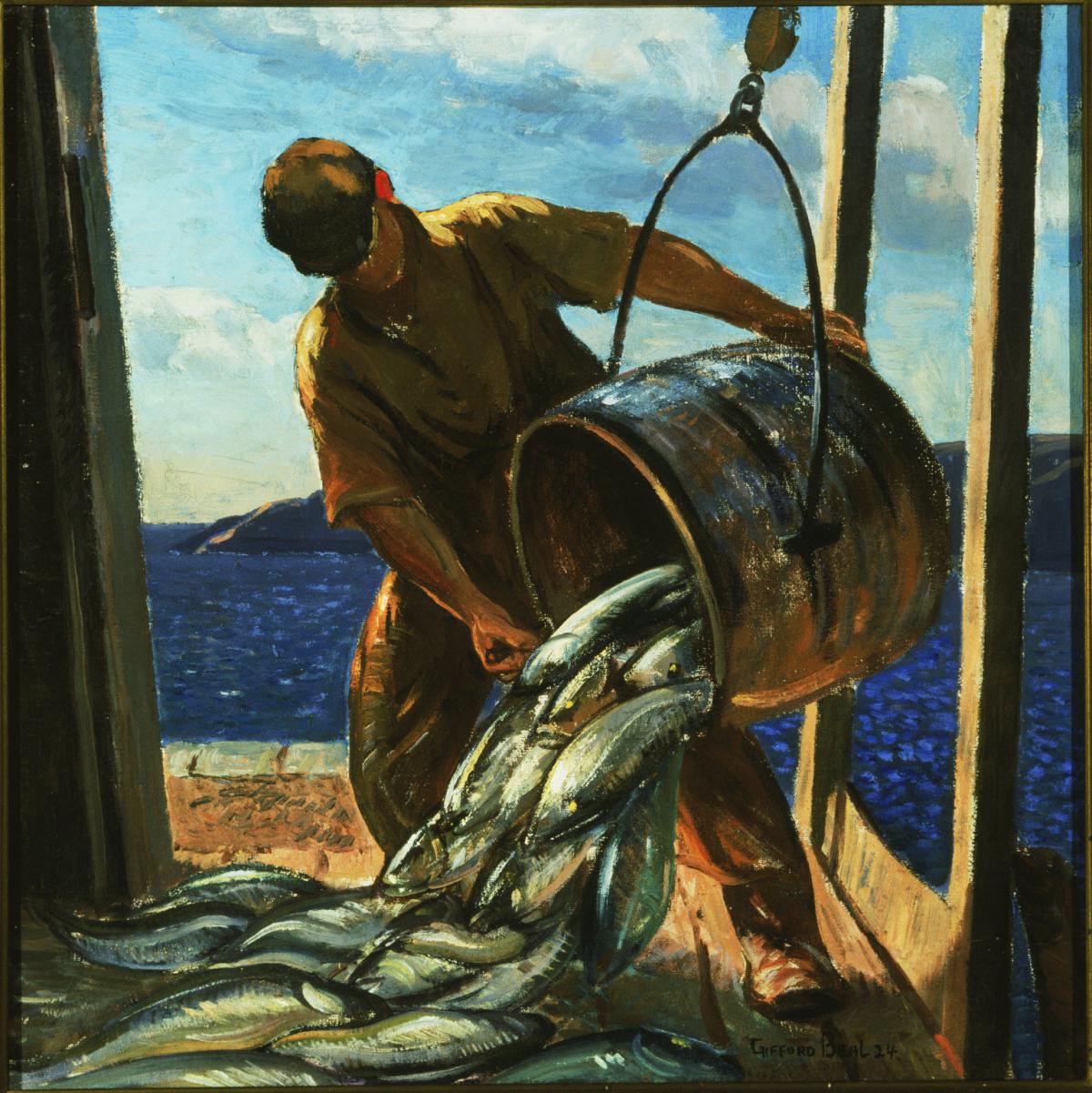The Fish Bucket
Gifford Beal ( 1924 )

Gifford Beal discovered Rockport, Massachusetts, in the mid-1920s. He had spent previous summers traveling along the New England coastline, visiting artist colonies, painting and relaxing at these various locations. However, Rockport made a bigger impact on Beal and he felt a kinship to the people and the town; he regularly spent summers there the rest of his life and established a permanent residence. Beal was drawn to Rockport’s small-town life of honest, working people without the distractions of other summer retreats.
During Beal’s summers in Rockport, he painted many scenes of the local residents working along the shore. In The Fish Bucket, Beal painted a man emptying his catch for the day onto the dock. Though Beal has portrayed a man hard at work, there is a lightness to the painting; Beal tended to paint pleasant images, finding ways to celebrate his subject. Beal successfully does this in The Fish Bucket with his bright palette. He captures warm sunlight, which fills with sky with bright blue light that dances off the sea; the fisherman’s body is framed in golden light. Beal’s soft, feathery brushwork furthers the sweet pleasantness of the painting, giving the sense of a gentle breeze sweeping through the air.